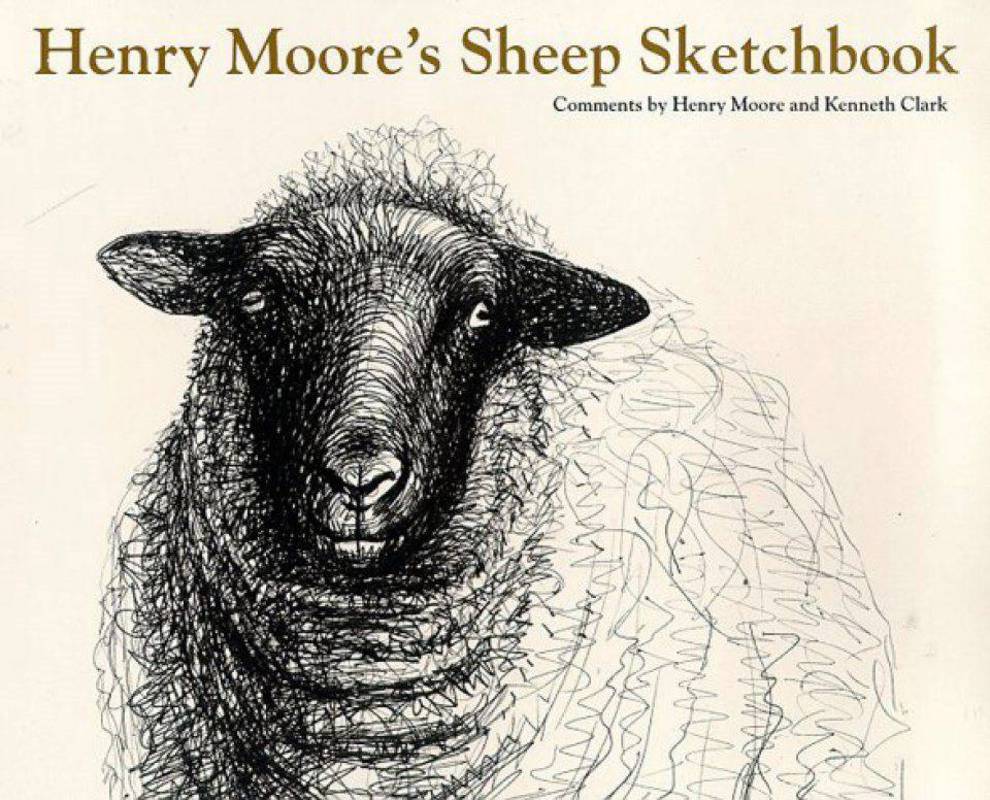In February 1972 Henry Moore’s sculpture studios in the English countryside at Much Hadham were filled with the preparations for his retrospective exhibition at Florence. In search of peace and quiet, he went into a smaller room overlooking the fields where a local farmer grazed his sheep. The sheep came very close to the window, attracting his attention, and he began to draw them. Initially he saw them as nothing more than four-legged balls of wool, but his vision changed as he explored what they were really like — the way they moved, the shape of their bodies under the fleece. They also developed strong human and biblical associations, and the sight of a ewe with her lamb evoked the mother-and-child theme — a large form sheltering a small one — which has been important to Henry Moore in all his work. He drew the sheep again that summer after they were shorn, when he could see the shapes of the bodies which had been covered by wool. Solid in form, sudden and vigorous in movement, Henry Moore’s sheep are created through a network of swirling and zigzagging lines in the rapid and (in Moore’s hands) sensitive medium of ballpoint pen.
- / Author
- / Article author
- / Mentioned
